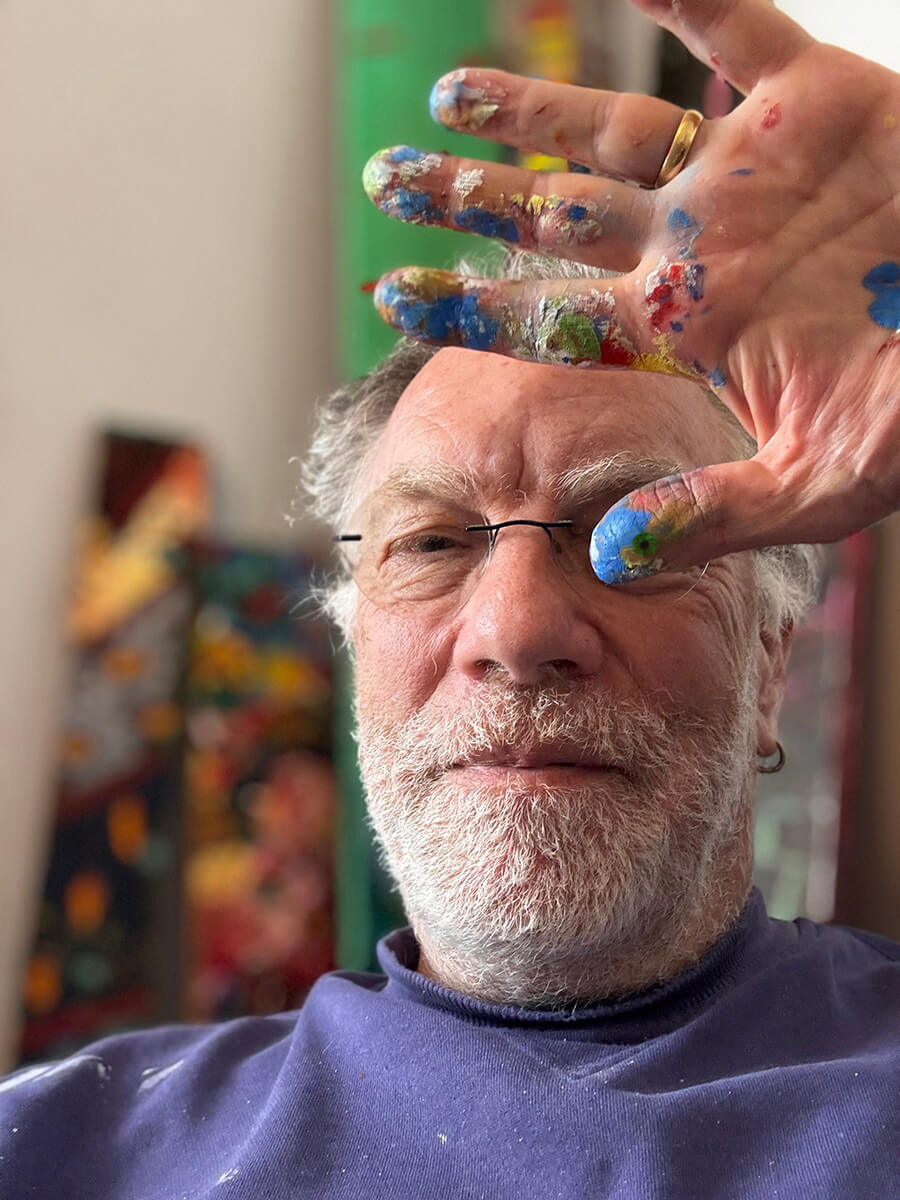
About
Past
Mark was born in Bermuda in 1957 moving to England in 1966. He began painting at the age of 8 and has pursued his passion for art throughout his life.
Mark studied Fine Art at St Martins School of Art and the Royal College of Art.
His life and work have taken him across the globe, living in Nepal, India, and the USA. Despite his international experiences, Mark has always identified as a Bermudian.
Selected Exhibitions
- New Contemporaries – ICA – 1977
- Stowells Trophy – Royal Academy – 1978
- Stowells Trophy – Royal Academy – 1979
- Discerning Eye – Mall Galleries – 1991
- Art in Mind – Brick Lane Gallery – 2009
- Birley Center – Solo Exhibition - 2011
- Bad Behaviour – Brixton East - 2016
- Open – Devonshire Collective - 2018
- The Holy Art - The Factory - 2020
- Ultra Modern - Old Fox Yard - 2024
- Sussex Open - Sussex Contemporary - 2024
Present
For over sixty years, Mark's work as a painter has been a meditation on process, chance, and the invisible forces that shape our world.
Influenced by the evolving insights of quantum mechanics, he explores the interplay between control and unpredictability - the collapse of probabilities into form.
Painting, for Mark, is not a static act but a field of unfolding events, a dialogue between intention and the unknown.
Mark's paintings have been influenced by his many years living in Nepal and traveling through neighboring countries, absorbing a deep awareness of impermanence, ritual, and the rhythms of nature.
These experiences inform both the structure and spirit of his work.
He sees his paintings not as breaks from tradition but as continuations - threads woven into the long history of mark-making and material inquiry.
Each work is a point in a continuum, part of painting's enduring attempt to make sense of the world beyond what can be seen.
Future
Mark makes work at a phenomenal rate, but his artifacts are often reworked or destroyed.
His work may be repainted in a continual process or maybe "tweaked" or overpainted after many years.
None of his works are exempt from being repainted, although the likelihood diminishes as time goes on.
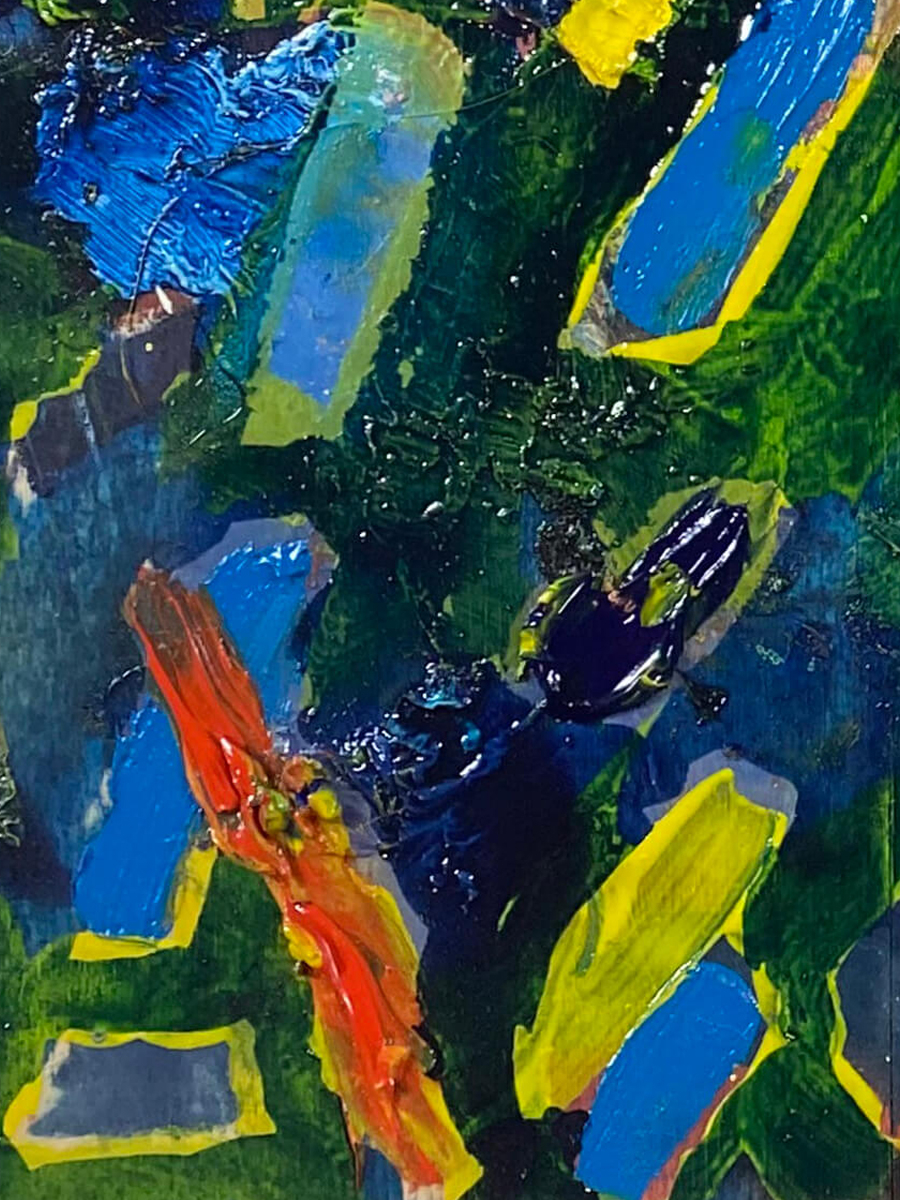
Paintings
Fast
When working in situ, Mark often works in an intuitive and hurried way to avoid drawing attention to himself and interference from onlookers.
These works are sometimes left in that state but more often enhanced in the studio afterwards from memory.
Sometimes Mark will refer to photographs for more information to enable these works to be completed.
Medium
The majority of Mark's work starts as a response to an idea. This then relies on information gleaned from direct experience or from processes such as photography and collage.
Paintings can be planned in traditional ways using pencils or paints of various types or can begin and be developed in digital media such as Photoshop.
Ideas are changed, adapted and developed through the processes used to create them, and Mark does not have a clear idea of what the result will be.
Probability plays a large part of the process rather than deterministic and rigid planning. Mark's best work comes from the process going awry and relying on a fix or a solution to bring it back to its meaning.
Slow
Mark's work can take many years of reworking to be finished. Even after being completed it may suddenly be reworked years later. There is no guarantee of permanence.
Sometimes it is necessary to hide completed works away to form a detachment from them, so when revealed later (sometimes many years later) the next step in the process can be executed dispassionately.
Once Mark has parted with a work he generally does not want to see it again. So it becomes safe from reworking.
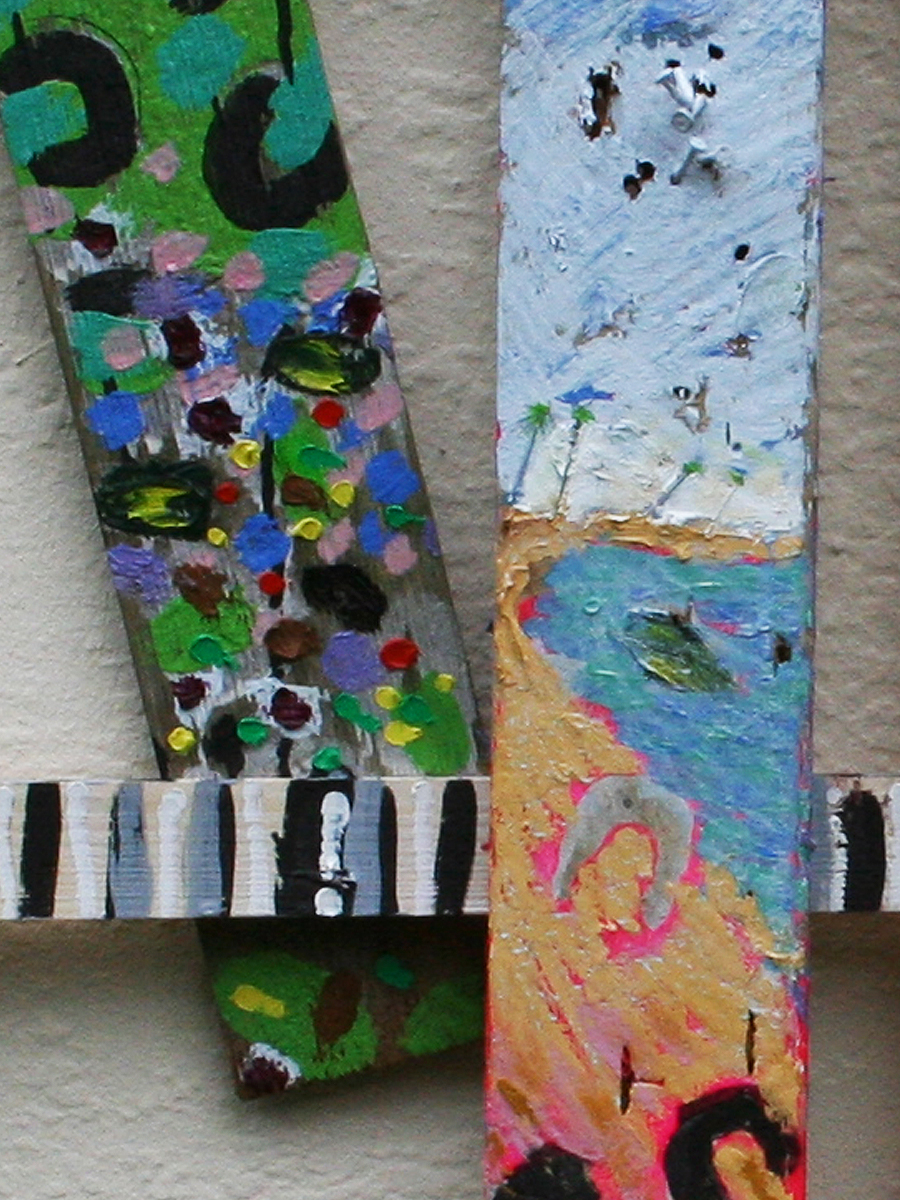
Fences
First Steps
Mark Painter’s exploration of fences and barricades as artistic forms began during his time studying at St Martins. Sharing a busy, open-plan studio, he felt a need for privacy—an escape from the constant gaze and judgment of others. To create a secluded space, he built a makeshift fence or barricade inside the studio.
This early structure was assembled from wood salvaged from skips, reflecting both necessity and a resourceful, scavenger’s approach. He hung his canvases on it and used the wooden barrier itself as a cleaning surface for his brushes.
Over time, this rough barricade transformed. What had started as a purely functional act of claiming personal space revealed its own artistic potential through accidental markings, stains, and layered textures.
Journey
Recognising this potential, Mark began to make deliberate fences—structures that embodied both the impulse to protect and the act of creation. These forms became a recurring motif, evolving from improvised barriers into intentional, expressive objects.
For Mark, fences hold deeply personal significance. He has described them as defensive structures designed to shield his inner thoughts and private emotions from the public.
Between 2006 and 2010, Mark developed “The Autobiography Fence,” creating one painted fence section to represent every year of his life up to marriage. The first section covered early childhood, resulting in thirty-two pieces.
These works combined personal memory, chronological mapping, and the symbolic power of the fence as both enclosure and revelation. In 2010, they were exhibited as a single continuous fence at the Birley Centre.
Destination
Mark’s fences have continued to evolve. Today, they are shaped less by the need to divide space and more by a responsiveness to the materials themselves.
Instead of simply erecting barriers, he engages in a conversation with salvaged wood—its grain, wear, and history guiding each new piece.
These newer fences are artworks from the start, hinting at boundaries and privacy but inviting viewers to consider reclamation, memory, and how personal history can be both hidden and revealed.
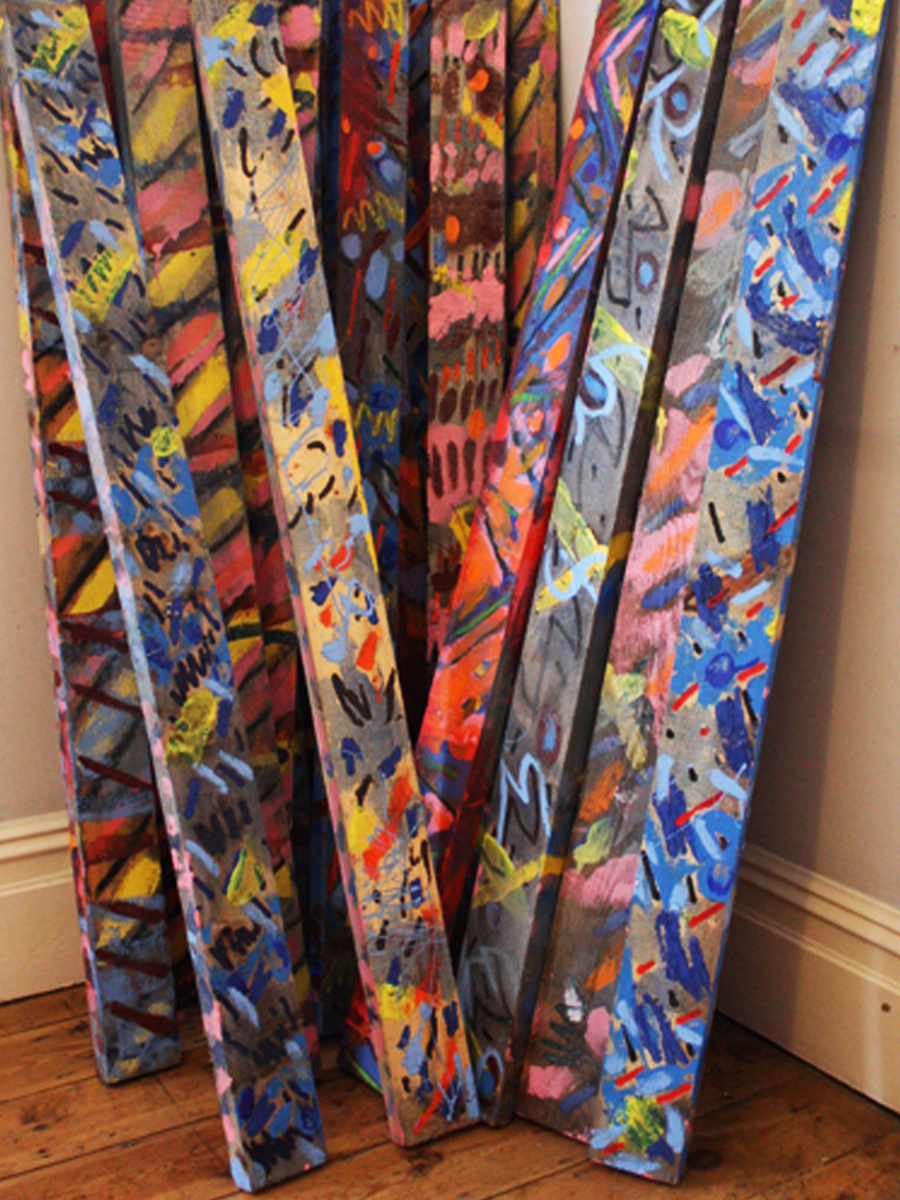
Splinter Groups
Splinters
Much like the fences that first emerged from necessity, Mark’s “Splinter Groups” also evolved organically from his working process.
As he created fences using salvaged wood, offcuts and half-painted slats began to accumulate. These “Splinters” were worked on individually, sometimes deliberately, often as receptacles for leftover paint.
Each fragment bore marks of use, traces of color, and a history of both abandonment and reuse.
Groups
As piles of reclaimed wood grew, they began to claim too much space in the studio. Mark started to gather them into deliberate groupings.
Leaned in corners or stacked carefully, they transformed from clutter to sculptural assemblages with emergent logic and character.
These “Splinter Groups” came to be seen as works in their own right—testaments to process, material memory, and meaning arising from the residue of making.
Viewers could arrange and rearrange them, exploring countless configurations and collaborations.
Lumber Yards
Mark began to join these grouped planks into larger units he called “Lumber Yards.”
Unlike defensive early barricades, these were communal and participatory. Their components could be rearranged, encouraging others—curators, visitors, friends—to become co-creators.
This shift marked an evolution from solitary, protective structures to collaborative, open-ended installations embracing impermanence and change.
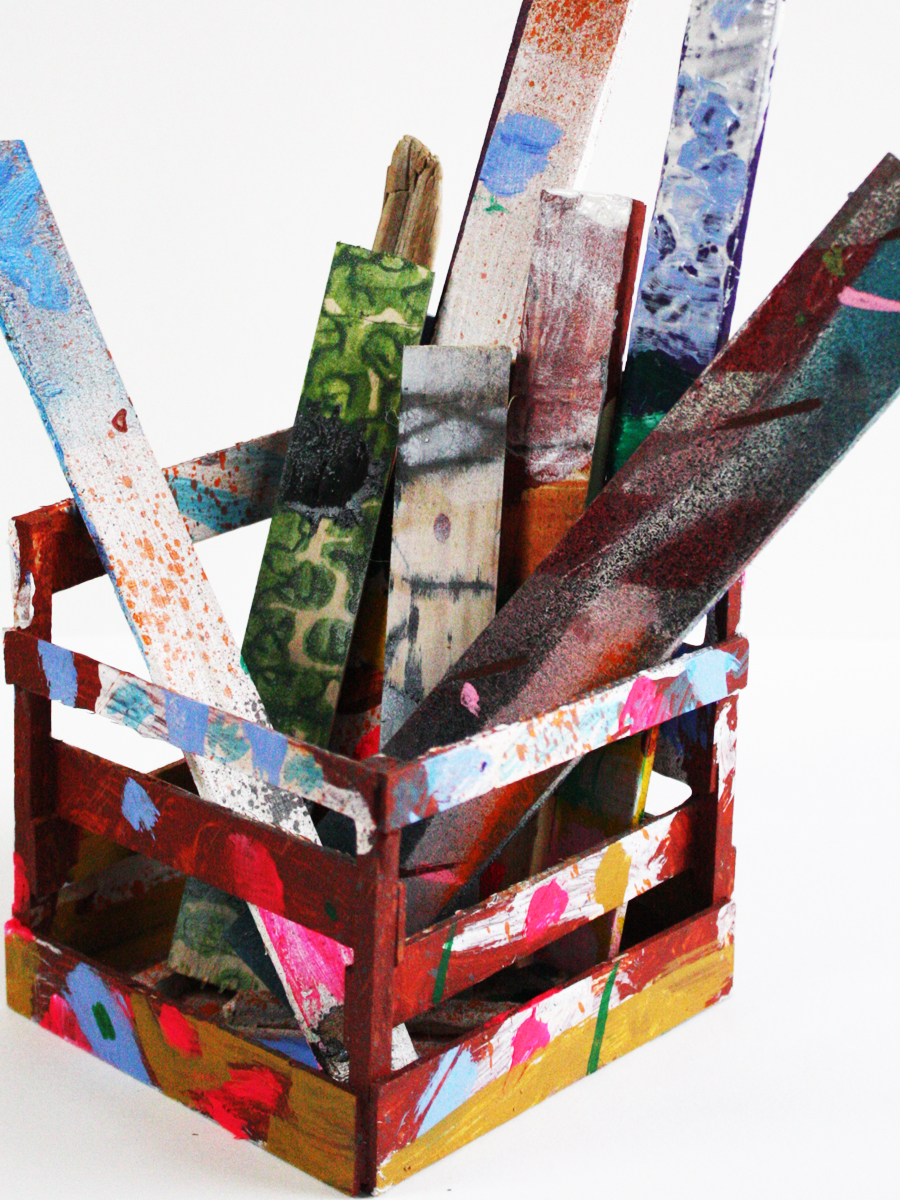
Splinter Crates
Crates
While the Splinter Groups and Lumber Yards opened up new possibilities for improvisation and interaction, they also presented a practical challenge in gallery settings.
Their loose, fragile arrangements could feel unruly or difficult to manage. To address this, Mark developed “Splinter Crates,” containing fragments within open, crate-like structures built from reclaimed wood.
The crate serves as both a physical container and a conceptual framing device, giving the splinters coherence while preserving their individual character.
Carbon Capture
The Splinter Crates also carry an environmental dimension, framed as a kind of “Carbon Capture Project.”
The salvaged timber would otherwise rot or be burned, releasing its stored carbon. By repurposing these fragments into art, Mark interrupts that cycle, sequestering carbon in solid form.
Metaphorically, the crates stand for society’s attempts to contain the climate crisis—acknowledging the value of carbon capture while highlighting the absurdity or insufficiency of such efforts.
Movable Sculpture
A crucial feature of the Splinter Crates is their open-topped design, inviting interaction and reconfiguration.
Unlike fixed sculptures, they don’t impose a single arrangement. Viewers are encouraged to rearrange the pieces, creating new compositions and exploring different relationships.
This participatory approach breaks down barriers between artist and audience, making them collaborative works shaped by ongoing engagement.
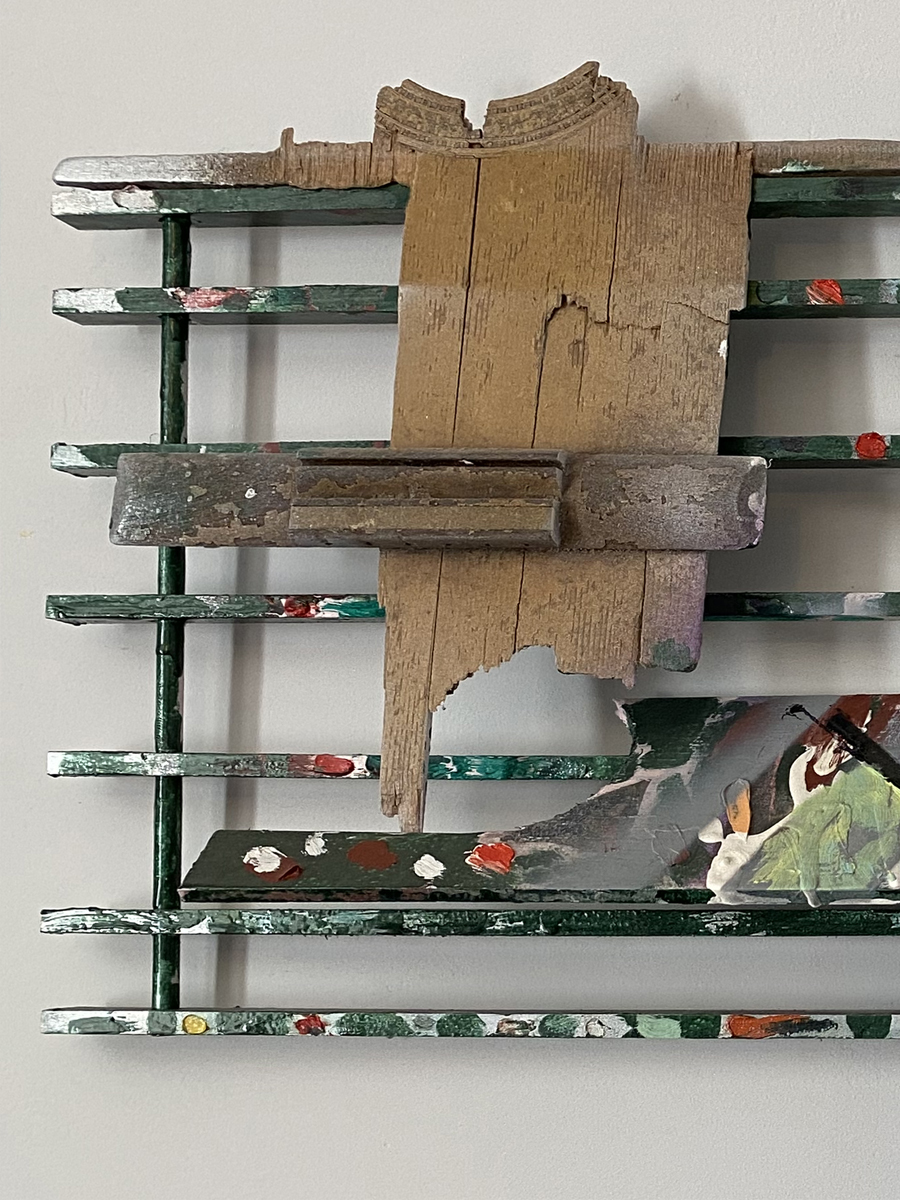
Shutters
Origins
A visit to Bermuda left a powerful impression on Mark. He was struck by the practicality of hurricane shutters designed to withstand storms and by their visual rhythm and cultural significance.
Weathered by salt and wind, Bermudian shutters embody human adaptation and resilience, balancing fragility with strength.
Each shutter tells a story of storms survived and repairs made, offering layers of history and care.
By incorporating this imagery, Mark acknowledges both a personal journey and broader themes of vulnerability and creative adaptation.
Defenses
Mark Painter’s exploration of boundaries and protective structures has found new expression in “Shutters,” inspired by the hurricane shutters of Bermuda.
Unlike fences that divide large spaces, shutters operate at a more intimate scale, guarding openings, controlling light, and regulating what is seen or hidden.
In Mark’s hands, they become both literal and metaphorical devices mediating between interior and exterior worlds.
Barriers
Shutters resonate with Mark’s long-standing fascination with fences and barriers, acting as thresholds between inside and outside, self and other.
But where fences suggest exclusion, shutters introduce a more flexible form of boundary. They can be opened or closed, partially revealed or sealed off.
This dynamic quality explores themes of transparency, choice, and agency in defining personal and shared space.
Built from reclaimed wood and marked by use, they highlight the beauty of imperfection and the passage of time.
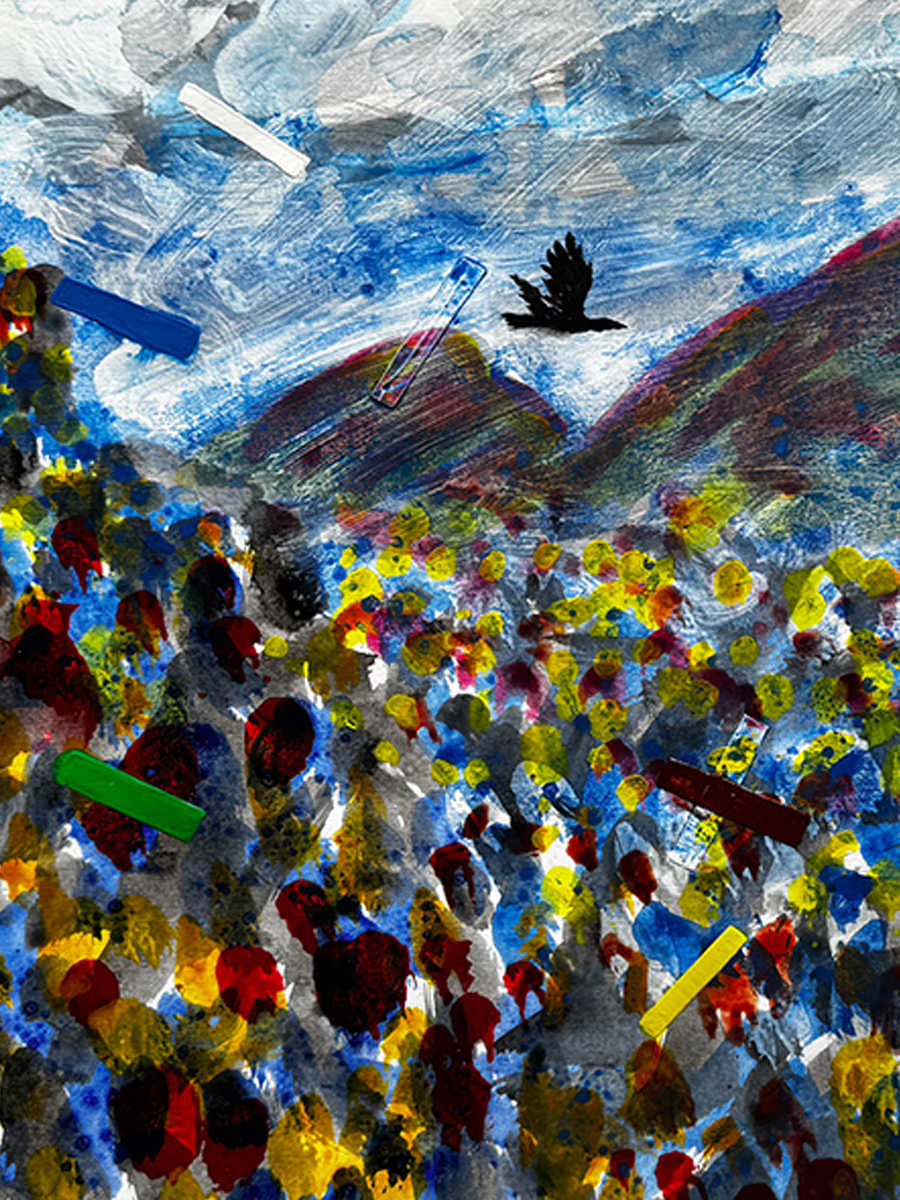
Recent
Old Journeys
Mark’s recent series revisits a formative journey that began in 1980, when he travelled extensively through India, Sri Lanka, and Nepal.
Determined to master watercolour, he used the trip as an immersive learning experience, filling sketchbooks with studies and impressions.
At the journey’s end he destroyed the sketchbooks deliberately, underscoring that artistic growth lay in experience itself, not in preserving artefacts.
Uncertainty
During his travels, Mark often avoided on-the-spot sketching of busy public scenes, choosing instead to commit them to memory and reconstruct them later in private.
This approach nurtured a heightened, subjective way of seeing, privileging essential forms and emotional truth over documentary precision.
He was also reading about physics, especially Heisenberg’s Uncertainty Principle, resonating with his emerging philosophy that observation changes what is seen and made.
Back in England, he recreated the destroyed sketchbooks entirely from memory, embracing uncertainty and interpretation.
New Pathways
Now, over forty-five years later, Mark returns to those remembered images, approaching them with the knowledge and experience of a lifetime.
Working in acrylic on A2 paper, he revisits the first of four recreated sketchbooks, transforming remembered scenes into layered, contemporary expressions.
These new paintings are not copies of past work but a fresh journey of discovery, meditations on time, change, and the enduring power of looking.